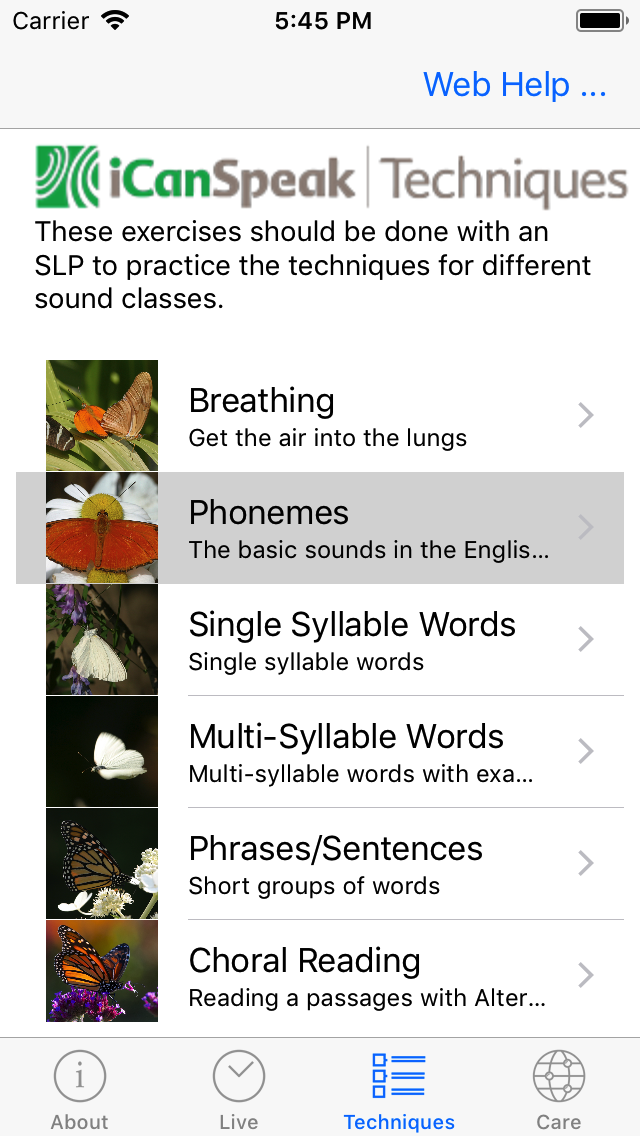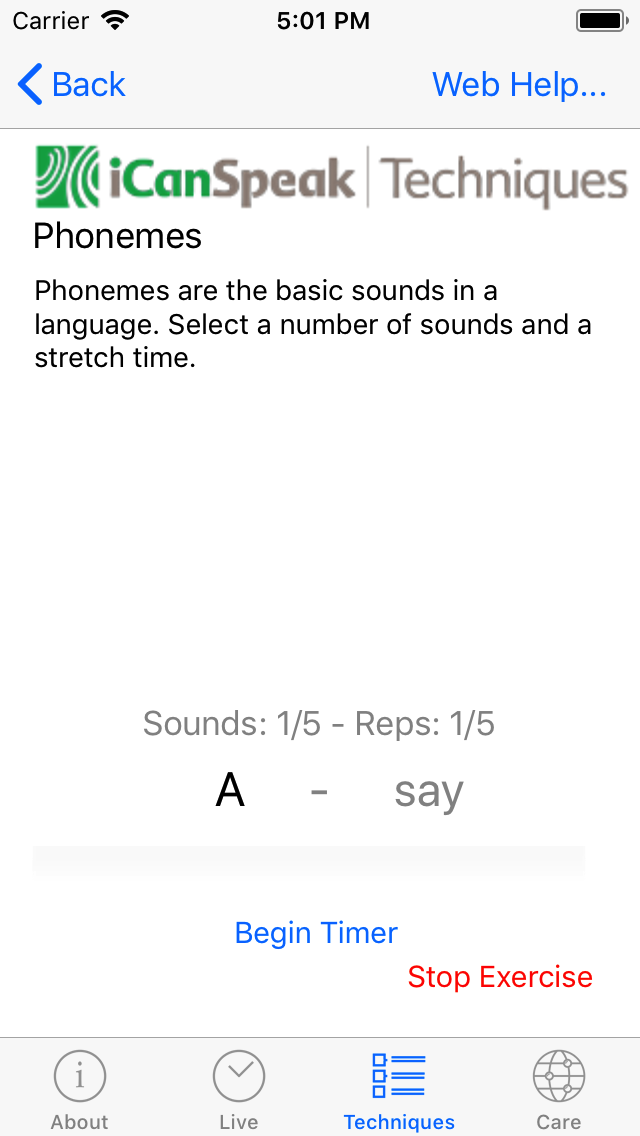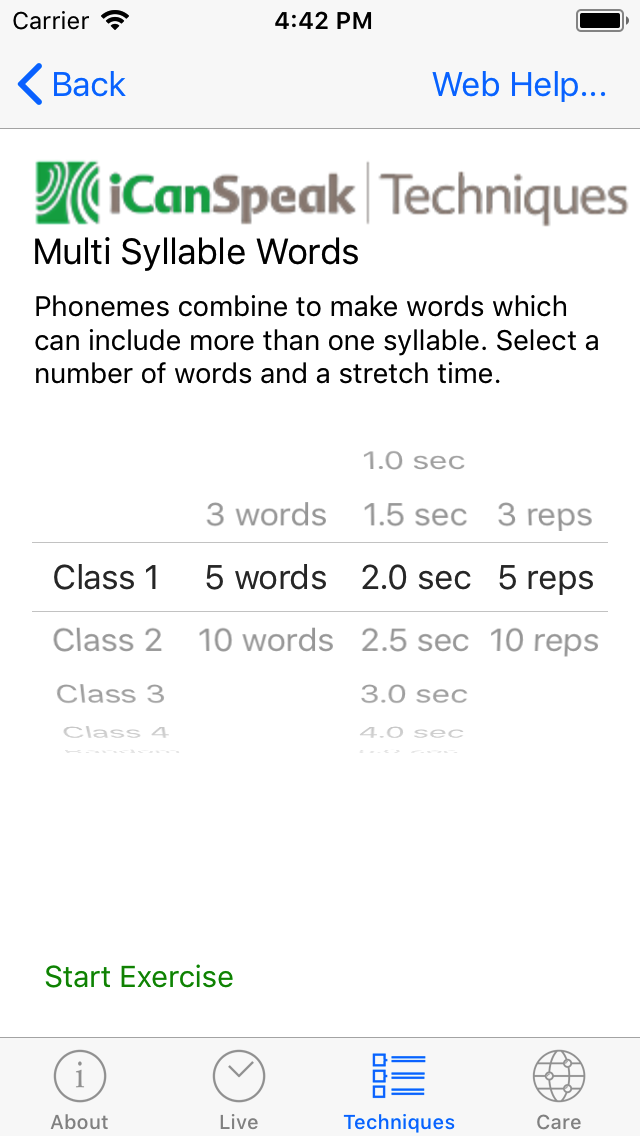The Techniques module provides a series of exercises that can be done with a Speech Language Pathologist to help users understand the techniques required for certain types of sounds.
The screen presents a list of different kinds of exercises that would be part of shaping exercises. Tapping on the row in the exercise table will open up a new screen for each exercise.
Exercises include timed breathing, shaping to Class 1, 2, 3 and 4 sounds (for phonemes single syllable words, multi-syllable words and sentences) as well as reading with choral speaking effect from the iPhone text to voice option.
Each of the exercises comes with the option for the number of repetitions as well as the duration of the repetitions.
The Web Help ... button will load up the appropriate help page from the web site.
























